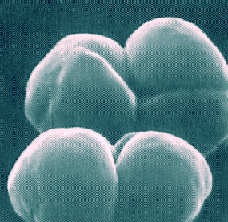Related Research Articles
The Thermoprotei is a class of the Thermoproteota.
In taxonomy, the Methanopyri are a class of the Euryarchaeota.

In the taxonomy of microorganisms, the Methanomicrobia are a class of the Euryarchaeota.

Methanococci is a class of methanogenic archaea in the phylum Euryarchaeota. They can be mesophilic, thermophilic or hyperthermophilic.
In taxonomy, the Methanosaetaceae are a family of microbes within the order Methanosarcinales. All species within this family use acetate as their sole source of energy.
Methanocaldococcus formerly known as Methanococcus is a genus of coccoid methanogen archaea. They are all mesophiles, except the thermophilic M. thermolithotrophicus and the hyperthermophilic M. jannaschii. The latter was discovered at the base of a “white smoker” chimney at 21°N on the East Pacific Rise and it was the first archaean genome to be completely sequenced, revealing many novel and eukaryote-like elements.
In taxonomy, Ahrensia is a genus of the Hyphomicrobiales. Ahrensia is named after the German microbiologist R. Ahrens. The cells are rod-shaped and motile. They are strictly aerobic.
In taxonomy, Rhodothalassium is a genus of the Rhodobacteraceae. Up to now there is only one species of this genus known.
Roseivivax is a genus of bacteria in the family Rhodobacteraceae.
In taxonomy, Methylarcula is a genus of the Rhodobacteraceae.
In taxonomy, Phaeobacter is a genus of the Rhodobacteraceae.
In taxonomy, Pseudorhodobacter is a genus of the Rhodobacteraceae.
In taxonomy, Rhodovulum is a genus of the Rhodobacteraceae.
In taxonomy, Roseibium is a genus of the Hyphomicrobiales.
Roseovarius is a genus of bacteria in the family Roseobacteraceae.
In taxonomy, Rubrimonas is a genus of the Rhodobacteraceae.
In taxonomy, Salipiger is a genus of the Rhodobacteraceae.
In taxonomy, Stappia is a genus of the Hyphomicrobiales. Some members of the genus oxidize carbon monoxide (CO) aerobically. Stappia indica is a diatom associated bacterium which is known to inhibit the growth of diatoms such as Thalassiosira pseudonana.
In taxonomy, Thalassobius is a genus of the Rhodobacteraceae.
In taxonomy, Methanotorris is a genus of the Methanocaldococcaceae. The organisms in this genus differ from those of Methanothermococcus in that they are hyperthermophiles and from those of Methanocaldococcus in that they have no flagella, are not motile, and do not require selenium to grow. These microbes have not been shown to cause any illnesses.
References
- ↑ See the NCBI webpage on Roseibacterium. Data extracted from the "NCBI taxonomy resources". National Center for Biotechnology Information . Retrieved 2007-03-19.